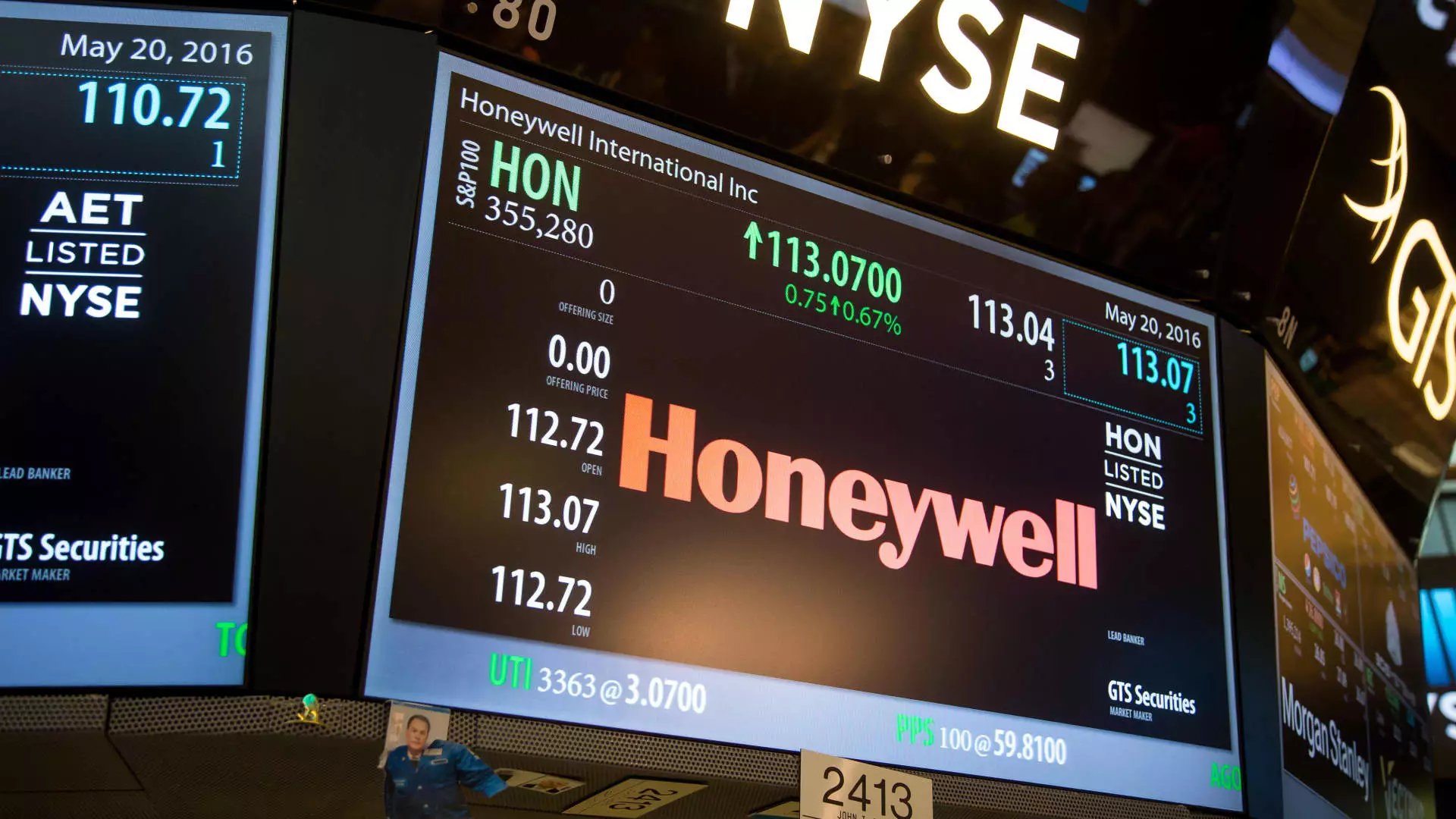Honeywell International Inc., a cornerstone of the industrial sector, recently reported its financial performance for the third quarter of 2023. While the results presented a mixed bag, they open discussions about the company’s trajectory moving forward. The juxtaposition between rising revenues and a significant stock price decline provides plenty of food for thought regarding the company’s strategic direction and future opportunities.
Third-Quarter Performance: A Mixed Bag
For the three-month period ending September 30, Honeywell generated revenues of $9.73 billion, marking a 5.6% increase compared to the same quarter the previous year. Despite this growth, the revenue figure fell short of the consensus estimate, which anticipated sales of $9.9 billion, sparking concerns among investors. However, adjusted earnings per share (EPS) showcased a more favorable scenario, climbing 8.4% to reach $2.58, thereby exceeding the expected $2.50, and surpassing even the upper band of prior guidance. This discrepancy between revenue and earnings highlights a complex operational landscape characterized by robust profitability despite underlying challenges.
Investors reacted negatively to the news, leading to a 4.5% drop in Honeywell shares shortly after the release. This decline is significant yet may reflect a potential buying opportunity, especially given the company’s promising outlook for 2025. As indicated by management, the focus going forward includes strategic investments and a potential refocusing of operations to underscore core business areas that align with future market trends.
Honeywell has historically been a comprehensive provider of industrial technologies across various sectors, prominently including aerospace. However, as industries evolve, the company finds itself at a crossroads, compelled to reevaluate its portfolio. The current strategic vision is directed towards divesting non-core businesses and channeling resources into three mega-trends: automation, future aviation technologies, and the transition to sustainable energy. These shifts are anticipated to enhance both the company’s competitive status and its long-term profitability.
Investors and analysts are beginning to see signs that despite current hurdles, Honeywell is positioning itself for greater market strength in the coming years. New CEO Vimal Kapur emphasized during recent earnings calls that the company intends to resolve key operational delays while fostering growth through strategic acquisitions. This proactive approach includes the completion of four significant acquisitions that aim to augment capabilities in automation and sustainability sectors, bringing in an estimated $2 billion in annual sales.
The challenges faced in the current operating environment cannot be overlooked. Delays in project-led businesses and ongoing supply chain disruptions have led to revised guidance for the remainder of the fiscal year. Notably, the company acknowledged the impact of a sluggish short-cycle recovery—where the speed from order receipt to delivery is fundamental to operational efficiency—on its overall performance. This stage of rapid business turnover exacerbates sensitivity to economic fluctuations, underscoring the importance of a swift adaptability strategy.
Moreover, management’s commentary suggested that Honeywell had to recalibrate several of its forecasts due to unexpected adjustments in operational demand, particularly in the industrial automation segment. The pressure for improvement in these areas could weigh heavily on stocks in the near term, but with a consistent book-to-bill ratio reflecting increased orders, the potential for recovery feels tangible.
Despite the short-term headwinds, there remains an optimistic perspective on Honeywell’s future, especially for 2025. Kapur indicated a strong commitment to margin expansion, fueled by anticipated growth across all operational segments. The emphasis on a strategic realignment, focusing on more profitable areas and refining operational efficiencies, provides a reassuring base for forecasts.
Additionally, plans to spin off non-core segments like the advanced materials division and sell the personal protective equipment business suggest a robust maneuvering towards enhancing organic growth and operational profitability. The key is to follow through on these strategic initiations and ensure strong execution.
In summation, while Honeywell’s recent performance presents a mélange of challenges and promise, the foundations for long-term growth seem solid. Those in the investment community should keenly watch how management navigates the current obstacles while leaning into progressive market trends. The notable adjustments in operational focus and the clarity on strategic priorities suggest Honeywell could very well emerge from this transitional phase ready to capitalize on burgeoning opportunities within its industry. For now, despite recent setbacks, this could indeed be an opportune moment for informed investors to consider a position in Honeywell, setting the stage for potential rebounds aligned with its long-term vision.

